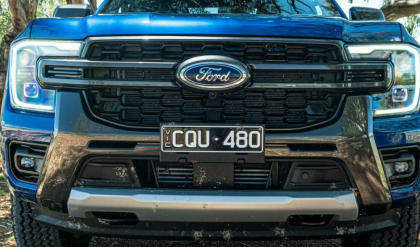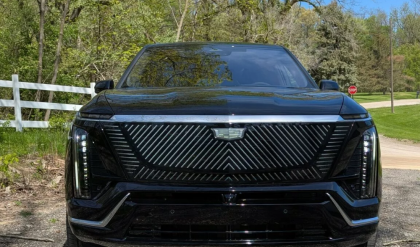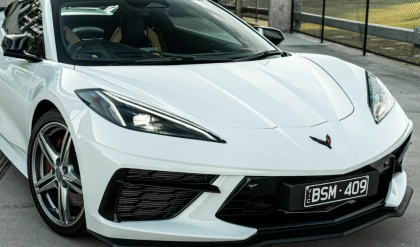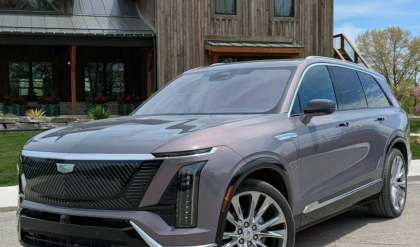2025 Nissan Sentra Review: A Value-Focused Sedan That Delivers On Its Promises
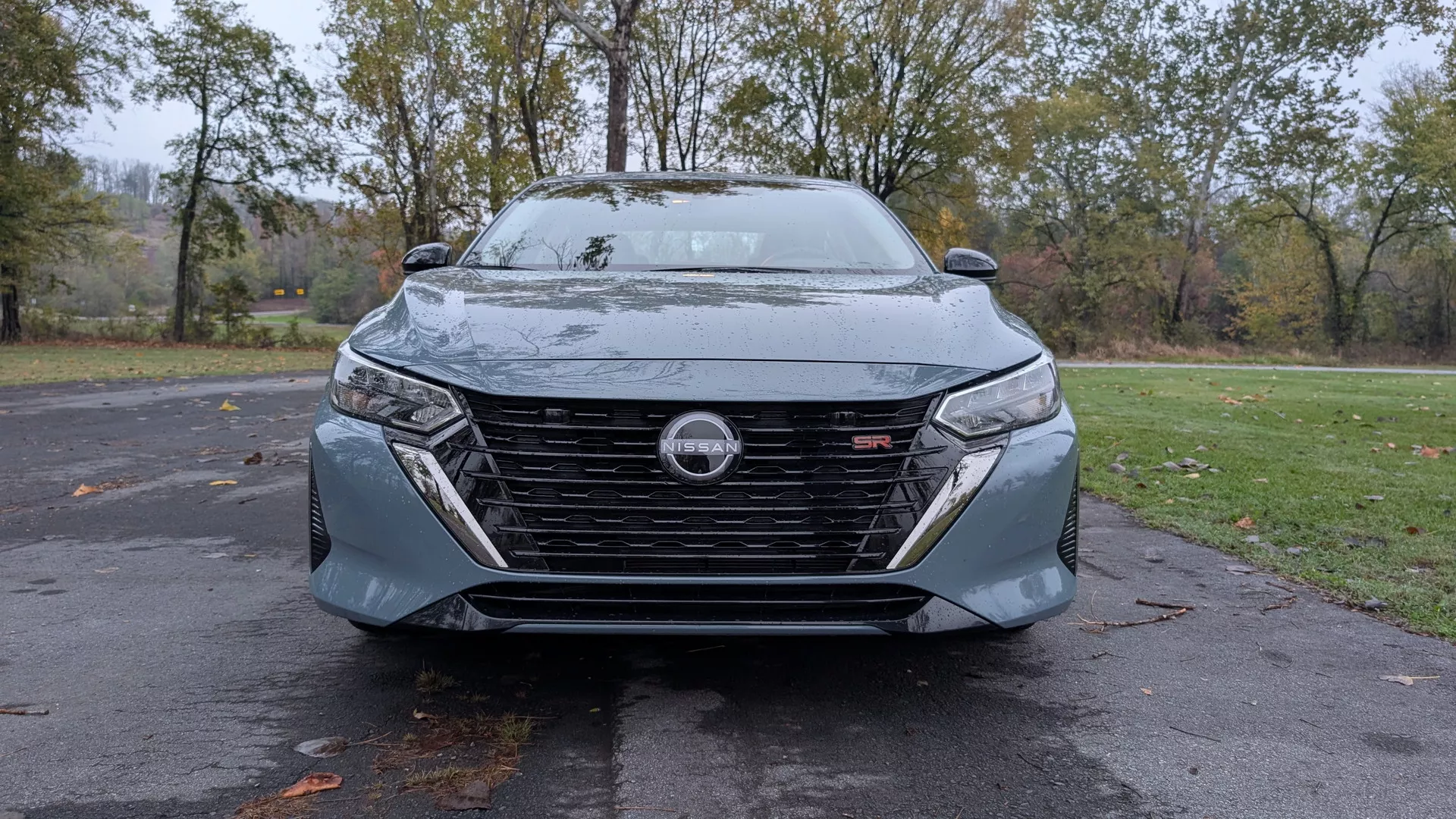
In a world increasingly dominated by SUVs, the humble sedan must fight for its place. To survive, it can’t just be good—it has to be a great value. That’s exactly where the 2025 Nissan Sentra comes in. As one of the very last small four-door cars on sale today, the Sentra doesn’t promise to be the fastest or the flashiest car on the block. Instead, it promises to be a comfortable, reliable, and affordable way to get from A to B. Nissan refreshed the Sentra for the 2024 model year, and this update is significant, bringing more tech, refinement, and comfort.

While it still has to go toe-to-toe with strong contenders like the Honda Civic and Hyundai Elantra, the Sentra aims to prove something interesting: that cars which don’t qualify as the very best in any one category can still be quite good. We put the 2025 Sentra SR through its paces for a week, treating it like the everyday driver it’s designed to be, to see if it delivers on its promises and stands as a true competitor in its segment.
Quick Facts

-
Model: 2025 Nissan Sentra SR
-
Dimensions: 183 in. (4,646 mm) L x 72 in. (1,816 mm) W x 57 in. (1,448 mm) H, 106.8 in. (2,712 mm) Wheelbase
-
Curb Weight: 3,036 lbs (1,377 kg)*
-
Powertrain: 2.0-Liter four-cylinder engine
-
Output: 149 horsepower (111 kW) and 146 lb-ft (197 Nm)
-
0-60 mph: 9.6 seconds (0-96 km/h)*
-
Transmission: CVT
The Quick Verdict: Pros and Cons
Let’s not waste any time. If you’re considering the 2025 Sentra, here’s the short version of what you need to know.
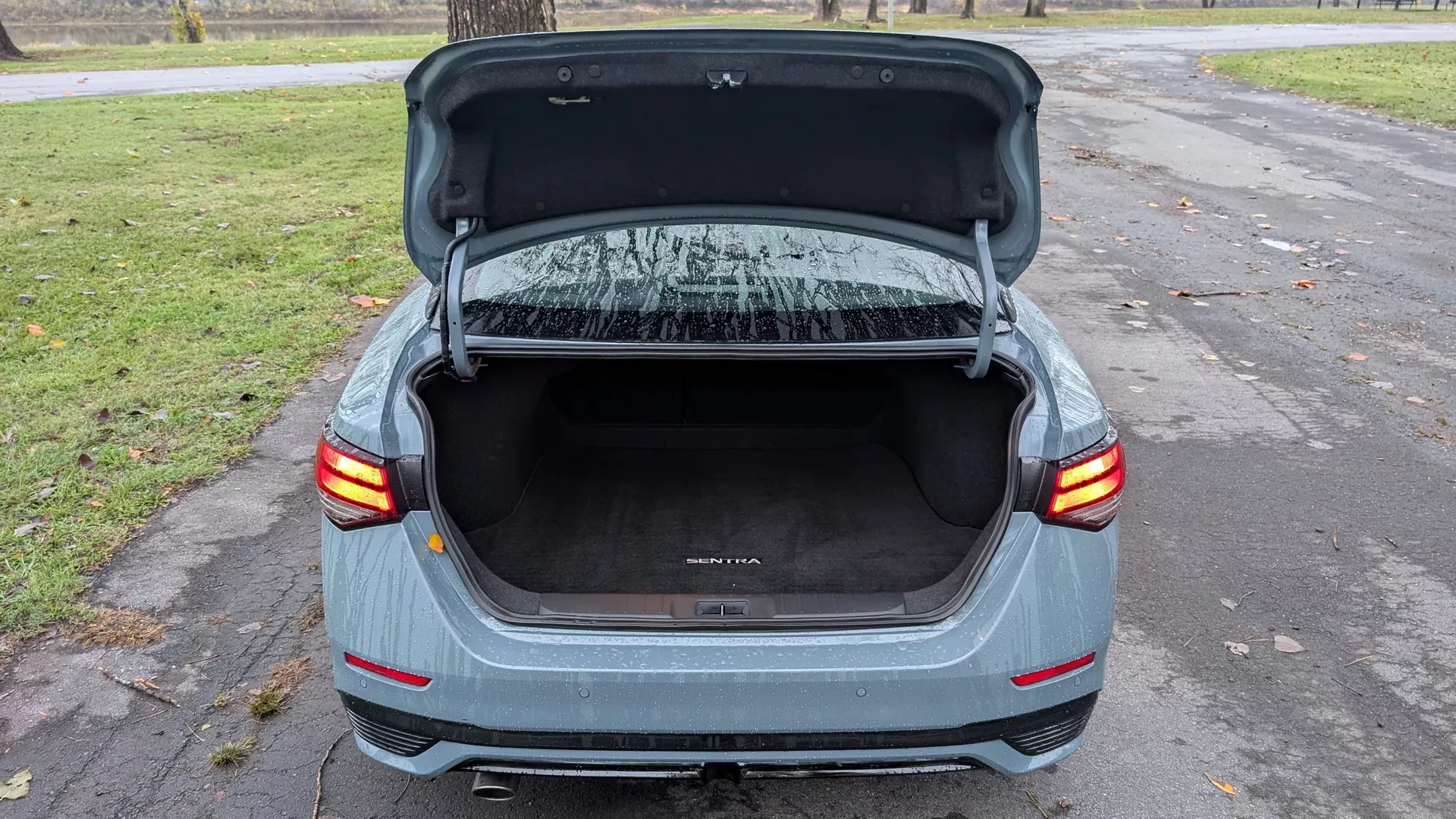
What We Like (The Pros):
-
A Killer Starting Price: With a price tag that starts in the low $20,000s, the Sentra is undeniably easy on the wallet.
-
Seriously Comfortable Seats: Nissan’s “Zero Gravity” seats are the real deal, offering fantastic comfort that punches way above its price class.
-
Great on Gas: You’ll be spending less time at the pump thanks to its impressive fuel economy, getting up to 30 MPG in the city and 38 MPG on the highway.
-
A Win for Common Sense: The dashboard features plenty of physical buttons and knobs for climate and audio, meaning you won’t be fumbling with a touchscreen for basic functions.
What We Don’t (The Cons):

-
Lackluster Performance: Let’s be honest, the 149-horsepower engine and CVT transmission are built for economy, not excitement. Overtaking on the highway requires planning.
-
The Tech Feels a Bit Dated: The infotainment system gets the job done, but its interface and responsiveness feel a step behind what you’ll find in rivals.
-
Gets Pricey, Fast: While the base model is a great deal, the top-tier SR trim pushes the price close to competitors that offer more power and features for the money.
Efficiency Over Excitement: The Powertrain and Driving Experience
Let’s immediately get this car’s biggest issue out of the way. The powertrain in the Sentra is a letdown when compared to the rest of this field. No matter how much one pays, they’ll get the same 2.0-liter four-cylinder engine in every single trim. It makes a measly 149 horsepower (111 kW) and 146 lb-ft (197 Nm) of torque.

Those figures make sense against something like a base Honda Civic, which puts out 150 hp (111 kW) and 133 lb-ft (180 Nm), but fall flat against every other trim and against most other competitors in the segment too. For example, the Mazda3 comes standard, in base form, with 191 hp (142 kW) and 186 lb-ft (251 Nm) of torque. Granted, the Mazda and Honda start at over $25,000 but our test version of the Sentra costs $29,635.
On top of the meager output, the Sentra comes exclusively with a continuously variable transmission (CVT). It’s no help to an already asthmatic engine. That said, the combination exists in this form mainly to accomplish two goals, both focused on economy. Not only is this drivetrain inexpensive for Nissan to produce, meaning it’s cheaper for the end customer, but it also achieves excellent fuel economy, getting up to 30 mpg in the city and 38 mpg on the highway. Combined, it’s good enough for 33 mpg should you keep your foot out of it. This makes the Sentra almost as good as the base Honda Civic when it comes to fuel economy and considerably better than the Mazda3. These tradeoffs are intentional, targeting a customer base that focuses on practicality over athletic driving prowess.
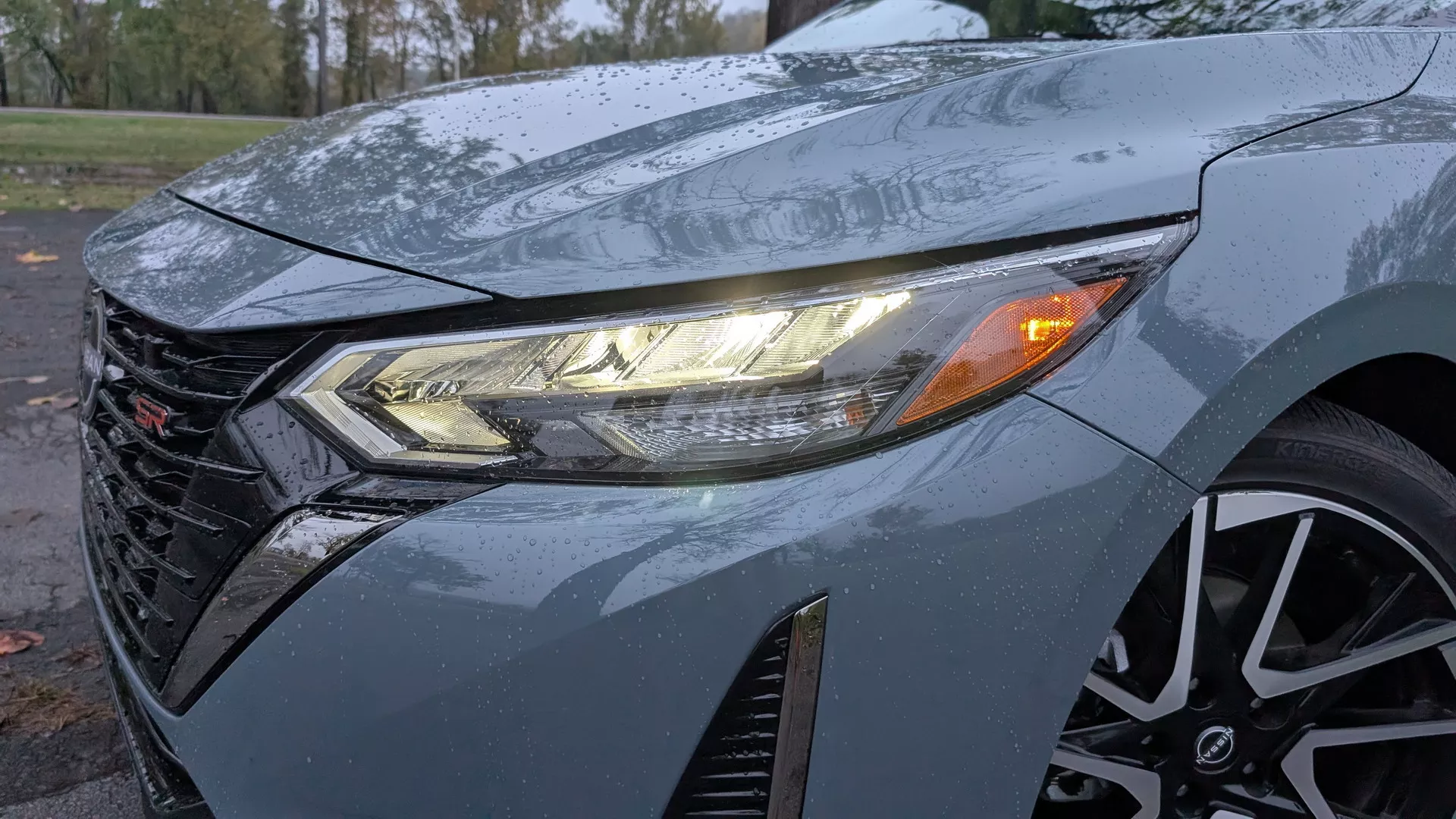
Despite the modest powertrain, the Sentra is genuinely fine to drive. In fact, given the engine and gearbox, it’s somewhat impressive. The chassis is well-balanced, the brakes are linear and easy to modulate, and the steering, while not exactly sharp, is predictable. It’s also good at soaking up bumps and imperfections on the road. While it’s not what I’d call quiet or serene, the cabin also isn’t disturbed by excessive road noise. In our testing, we managed to get 31.7 mpg over a mix of highway but mostly city driving. A person interested in this car for its cabin, safety features, and fuel economy will likely be pleasantly surprised by its on-road manners.
Step Inside: A Well-Built and Laid-Out Cabin Where Comfort Is King

The interior is where the Sentra truly shines and feels more expensive than it is. The Sentra is a car doing everything it can to eke the most value out of every penny put into it. Our top-trimmed example blended a lot of soft-touch materials in places where they weren’t expected. The dashboard, door cards, and center console are mostly devoid of hard cheap plastics. Instead, one gets soft foam or faux leather with red stitching. It’s a great look for any car under $30,000.
The absolute star of the show is the seating. That same attention continues to Nissan’s Zero Gravity seats. I’ve raved about them before and I’ll do it again here. They’re excellent and I wish more car companies would license the technology from Nissan or come up with something similar on their own. In a nutshell, the seat is designed to fully support a person’s upper body so that no one point feels excessive pressure. They are exceptionally comfortable and supportive, a feature you’d typically expect in a much more expensive vehicle. While some might not love these seats as much, they are a definite highlight.
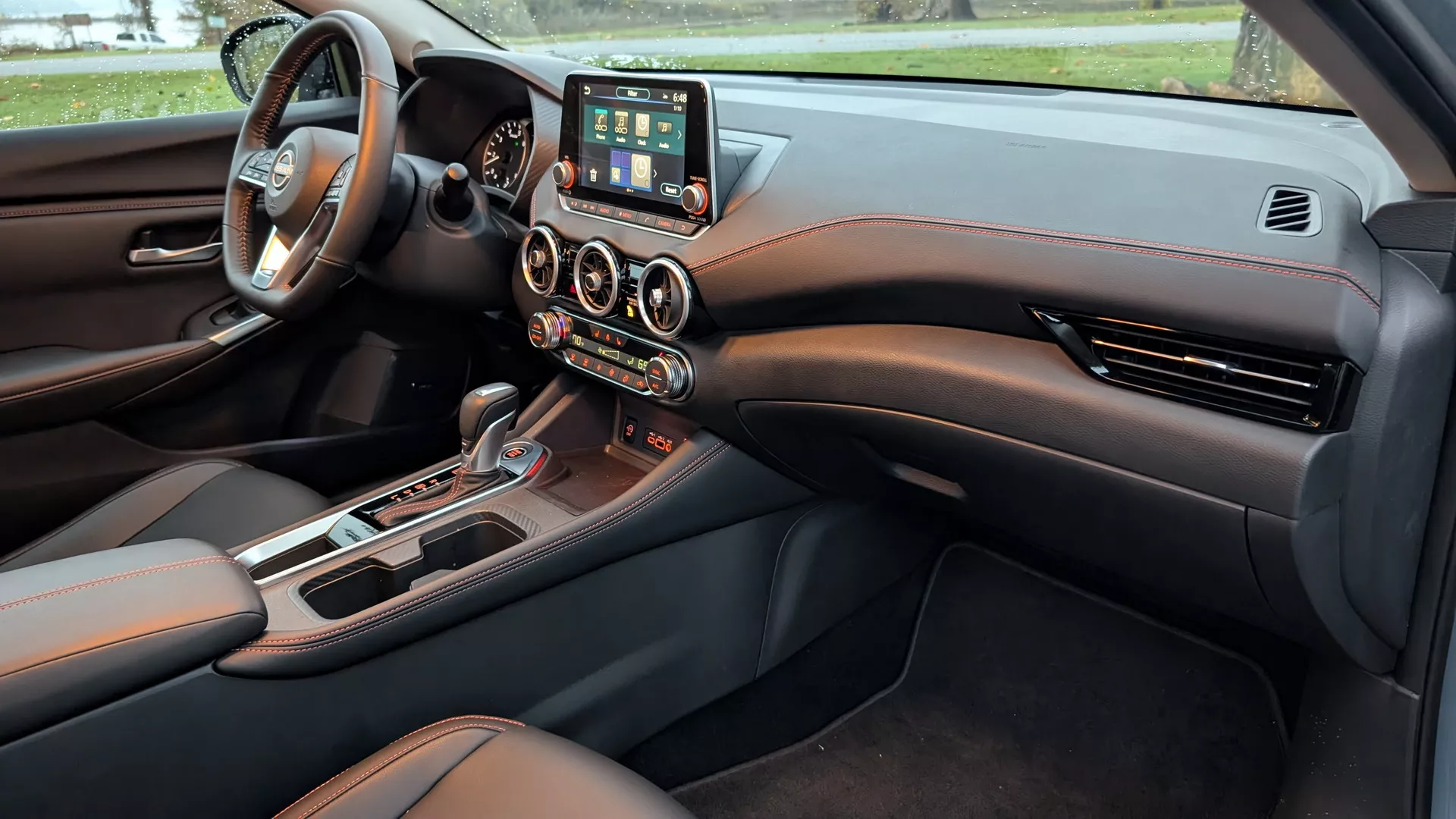
Moving onto the controls, Nissan incorporates a bevy of real physical knobs, switches, and buttons that all work very well. The back-to-basics approach to the controls is a major plus. Rather than having to hunt around on a touchscreen, just about every vital control is available via a physical switch. In fact, every single button on the steering wheel is a physical one – as it should be. There are also a few buttons that sit just below the infotainment system for important actions like skipping tracks, going to the home menu, or hanging up the phone.
Speaking of the infotainment system, it’s maybe the most middling part of the cabin. It sort of looks as if Nissan forgot it and then tacked it on at the last minute. Gripes about the design of the system in the dash aside, the actual user interface feels dated and a bit slow. It’s not Subaru Crosstrek slow but it’s far from what most modern infotainment systems offer. The menu layout is at least easy to navigate and understand. While functional with Apple CarPlay and Android Auto, it feels a bit old-fashioned compared to the slick systems in rivals.
In terms of the general design, the Sentra’s cabin is mostly cohesive, and Nissan doesn’t just slather everything with piano black trim either. Is faux carbon fiber better? That’s up to you, but at least it doesn’t gather fingerprints so easily. The cabin space is laid out to prioritize front seat passengers. That said, there isn’t much space in the rear seats for taller adults. At the same time, it’s more than enough for an everyday trip around town. Nissan includes Zero Gravity outboard rear seats in every Sentra. Those in the aft seats get access to a single power port but no climate controls or vents of their own. Behind the 60/40 split-folding seats you’ll find 14.3 cubic feet of cargo space in the trunk.
Pricing and Competition: Where Does the Sentra Stand?
The Nissan Sentra is up against a lot of stiff competition these days, and none of it is easy to beat. What it leans on most is a very low price.
-
Sentra S (Base): Starts around $21,590.
-
Sentra SV (Mid-Tier): Around $22,520.
-
Sentra SR (Top-Tier): Starts at $24,590.
The base S and mid-tier SV models represent fantastic value. At its starting price of just $21,590, it’s more accessible than most of its rivals. In addition, where most of the cars in this class have top trims that cost well-north of $30,000, the Sentra’s top trim, the SR, starts at $24,590. At that price, it comes with 18-inch wheels, LED headlights, dual-zone automatic climate control, heated front seats, leather upholstery, and adaptive cruise control. All Sentras come with two years of complimentary maintenance too.

It’s worth noting though that as the Sentra gets more expensive, the value proposition isn’t as good. Sure, our $29,635 test car feels great, but that same cash could net a Honda Civic Hybrid with more power and far better fuel economy. For those who seriously prioritize fuel economy, it’s a bit too close to the base price of a Toyota Prius too. On the flip side, those who want a sporty car do better to look at a Hyundai Elantra N-Line or a Mazda3 for that kind of cash.
Final Thoughts: Who Should Buy the 2025 Nissan Sentra?
On paper, there aren’t any big “wow” moments for the Sentra. Sometimes it can be easy to forget that “wow” moments sometimes come in a negative context though. Not every car is great, but very few are sincerely bad today.
The 2025 Nissan Sentra is not trying to be a sports sedan. It’s an honest, unpretentious, and practical car for people who want to get where they’re going comfortably and affordably. It’s a sincerely practical sedan that focuses on economy and comfort over athleticism and gadgets. It won’t excite you in any way, but for the money, it’s a very reasonable value in the greater automotive landscape, where that’s rarely true.

You should seriously consider the Sentra if:
-
Your top priorities are a low purchase price and good fuel economy.
-
You value a comfortable ride and supportive seats over sharp handling.
-
You want a reliable daily driver for commuting, running errands, or for a first-time car buyer.
It’s a car that knows its job and does it well. It’s not trying to be the best at everything, but it’s very, very good at being a sensible car. And for many people, that’s exactly what they need.

